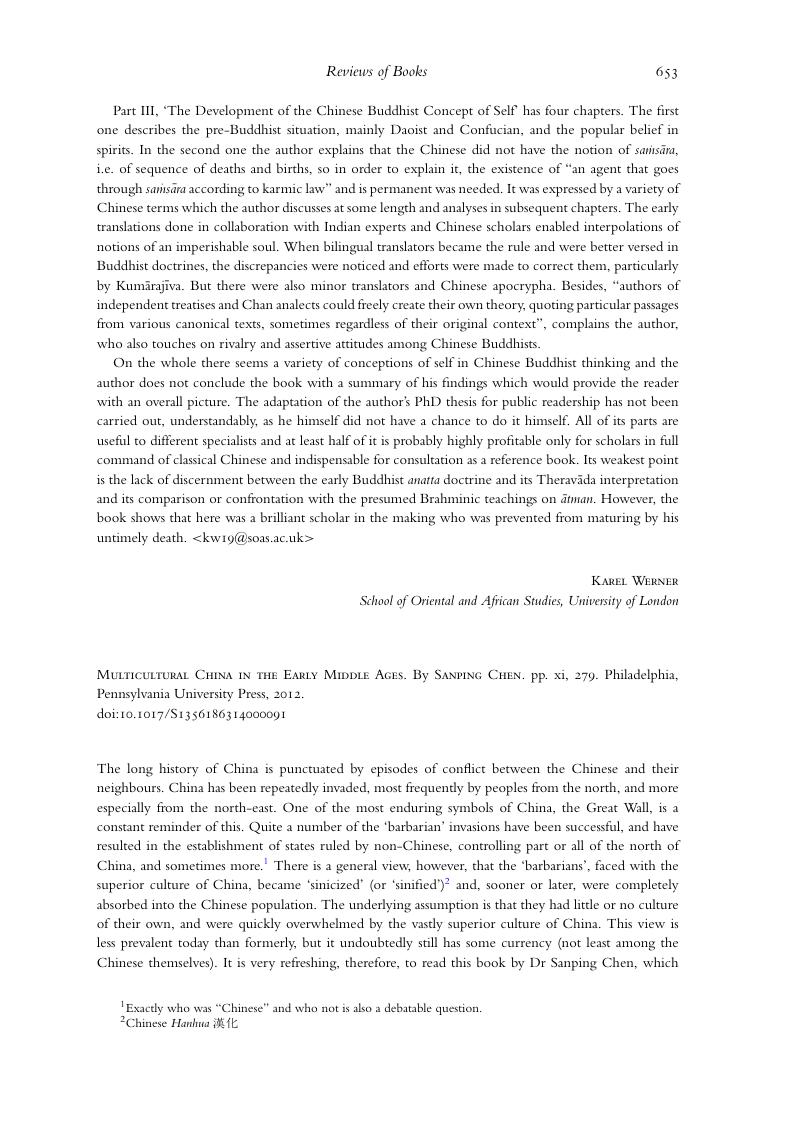No CrossRef data available.
Article contents
Multicultural China in the Early Middle Ages. By Sanping Chen . pp. xi, 279. Philadelphia, Pennsylvania University Press, 2012.
Published online by Cambridge University Press: 03 March 2014
Abstract

- Type
- Book Review
- Information
- Copyright
- Copyright © The Royal Asiatic Society 2014
References
1 Exactly who was “Chinese” and who not is also a debatable question.
2 Chinese Hanhua 漢化
3 白居易
4 拓跋
5 魏
6 Mackerras, C. (ed. and trans.), The Uighur Empire According to the T'ang Dynastic Histories: a study in Sino-Uighur relations 744 – 840 (Canberra: Australian National University Press, 1972), p. 63 Google Scholar.
7 新唐書.
8 安祿山
9 哥舒翰
10 胡. In the case of An Lushan, it certainly means Sogdian, but, at this period, it more generally referred to Central Asians of Eastern Iranian or Indo-Iranic type.
11 Xu, Liu 劉昫, et al. (eds), Jiu Tang shu 舊唐書, 16 vols. (Beijing: Zhonghua Shuju 中華書局, 1975), vol. 10, juan 卷 104, p. 3213 Google Scholar.
12 The Old History of the Tang Dynasty (Jiu Tang shu) and the Comprehensive Mirror for Aid in Government (Zizhi tongjian 資治通鉴).


